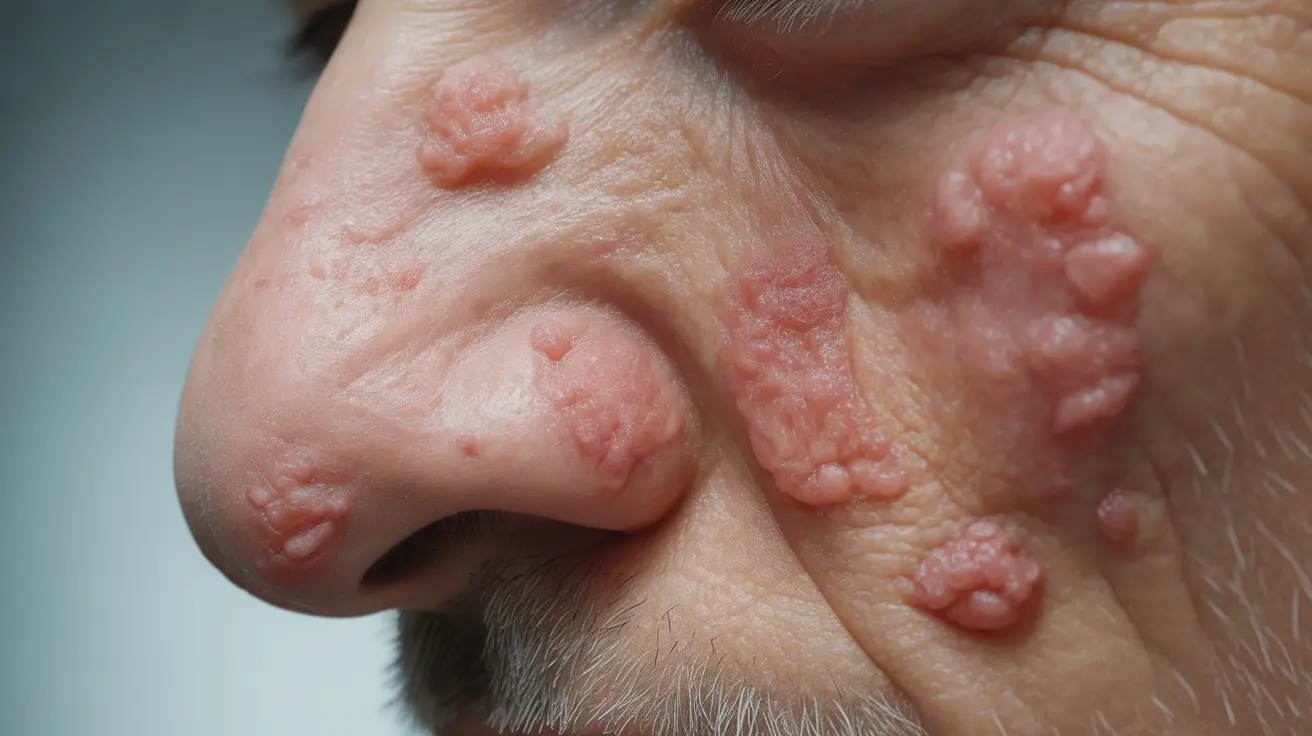Actinic keratosis on the nose is a common precancerous skin condition that develops due to prolonged sun exposure. These rough, scaly patches can be concerning, but with proper understanding and treatment, they can be effectively managed. Understanding the signs, treatment options, and preventive measures is crucial for maintaining healthy skin and preventing potential complications.
Understanding Actinic Keratosis on the Nose
The nose, being prominently exposed to sunlight, is particularly susceptible to developing actinic keratosis. These lesions typically appear as small, rough patches that may be pink, red, or flesh-colored. The texture often feels like sandpaper, and the patches can range from tiny spots to larger areas measuring up to an inch in diameter.
Signs and Symptoms
Common characteristics of actinic keratosis on the nose include:
- Rough, scaly, or crusty patches
- Pink, red, or brownish coloring
- Occasional itching or burning sensation
- Sometimes raised or horn-like growths
- Size ranging from 2-6 millimeters
- Possible tenderness when touched
Diagnosis Process
Healthcare providers typically diagnose actinic keratosis through a visual examination and physical inspection of the affected area. In some cases, they may perform a skin biopsy to rule out other conditions or confirm the diagnosis, particularly if the lesion shows suspicious characteristics.
Treatment Options
Topical Medications
Several prescription medications can effectively treat actinic keratosis:
- Fluorouracil cream
- Imiquimod
- Diclofenac gel
- Ingenol mebutate
Medical Procedures
For more persistent cases, medical procedures may be recommended:
- Cryotherapy (freezing)
- Photodynamic therapy
- Curettage
- Chemical peels
- Laser therapy
Prevention Strategies
Preventing actinic keratosis on the nose involves comprehensive sun protection measures:
- Daily use of broad-spectrum sunscreen (SPF 30 or higher)
- Wearing protective hats with wide brims
- Seeking shade during peak sun hours
- Regular skin examinations
- Using protective clothing and accessories
Long-term Management
Managing actinic keratosis requires ongoing attention and care. Regular follow-up appointments with a dermatologist are essential, as these lesions can recur or develop into more serious conditions if left unmonitored.
Frequently Asked Questions
What are the typical symptoms and signs of actinic keratosis on the nose, and how is it diagnosed?
Actinic keratosis typically appears as rough, scaly patches that may be pink, red, or flesh-colored. The diagnosis is usually made through visual examination by a healthcare provider, sometimes accompanied by a skin biopsy if necessary.
How is actinic keratosis on the nose usually treated, and what are the most common treatments?
Common treatments include topical medications like fluorouracil and imiquimod, as well as procedures such as cryotherapy, photodynamic therapy, and chemical peels. The choice of treatment depends on the severity and extent of the condition.
Can actinic keratosis on the nose be prevented, and what are the best ways to protect the skin from further damage?
Prevention is possible through consistent sun protection measures, including daily sunscreen use, wearing protective clothing, and avoiding peak sun hours. Regular skin checks and prompt treatment of new lesions are also essential.
What are the risks of leaving actinic keratosis untreated, and how can it affect overall skin health?
Untreated actinic keratosis can potentially develop into squamous cell carcinoma, a type of skin cancer. It may also lead to cosmetic concerns and indicate significant sun damage to the surrounding skin.
What are some effective home care strategies for managing and preventing actinic keratosis on the nose after treatment?
Effective home care includes consistent sun protection, gentle skincare routines, regular moisturizing, and avoiding harsh skin products. It's also important to perform regular self-examinations and maintain follow-up appointments with healthcare providers.




